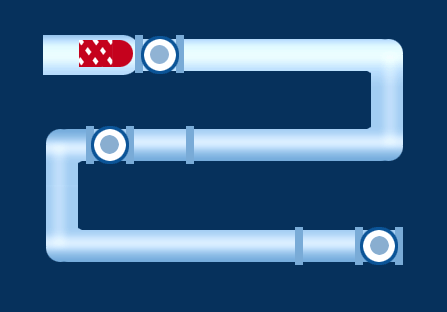Porous rocks and pipeline pigging
How much water will a rock hold? How can you move a marble through a pipeline using only gravity? These were questions Dominic Mileto of Warren G. Harding High School considered with his 9th grade physical science class after attending the OOGEEP STEM educator workshop.
The first activity that I did with my students was the Baking Rocks lab, which tied in well with the physical properties of matter. The primary key terms that we discussed were porosity, permeability and density. The resource room students were put in two groups. The first group looked and listed the rocks and ranked them based on how much water they thought each would hold. The second group weighed the grouping of rocks utilizing a triple beam balance because I wanted to get them familiarized with the process for later labs.
Once the weights and observations were made and discussed, the groups switched. The last procedure of day 1 of the lab was to put the rocks into glass beakers containing 20ml of water. Rather than placing them in each beaker for one hour, we waited 24 hours until the next class day.
On the second day, the students took turns weighing the rocks and ranking them from least to greatest permeability. The students were amazed by the increase in grams of water held inside the rocks. The discussion led into how sometimes older homes' block walls absorb water and need repaired or replaced because of the expanding and contracting that happens with rock temperatures. Finally, the students ranked the porosity of the rocks and wrote conclusions to their observations for the baking rocks lab.

The second activity that I did with my students was Pipeline and Pipeline Pigging. The students had to figure out how to use the classroom furniture including desks, chairs, bookshelves, boxes, and crates to make a pipeline that could move a marble through the pipes without anything but gravity. It was great to see who the leaders of the classroom were and who followed the lead.
A highlight of the OOGEEP workshop was being able to go on the oil rig site to see the behind-the-scenes happenings. Another part of the workshop that I really enjoyed was going to where the pipes are threaded and used for horizontal and vertical fracking. I was able to share this career information with my students.
(image courtesy of polyeurope.com)